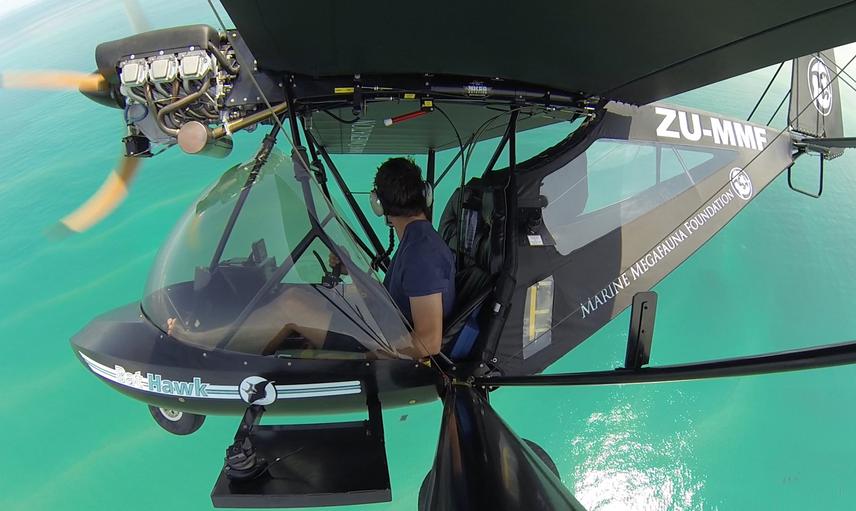Simon Pierce
Other projects
7 Jul 2009
Population Ecology of Whale Sharks in Mozambique: The Largest Population of the Largest Fish?
We will work with coastal communities in Mozambique to quantify and reduce the amount of whale shark bycatch in artisanal gillnet fisheries.

Aerial surveillance Janneman spotting for manta rays.
Our previous RSGF-supported project found that the southern Mozambican coast is a global hotspot for whale sharks, serving as a feeding ground for juvenile male sharks. Our satellite-tagging studies have shown that the whale sharks habitually use surface waters within a few hundred metres of the shoreline, close to the continental shelf. The length of coast used as a movement corridor by the sharks is around 250 km in length, spanning the majority of Inhambane Province.
During the course of this study we documented a 79% decline in whale shark sightings between 2005 and 2011, which has continued to the present. We have tested several potential causes of this decline, including increasing tourism and oceanographic change, without detecting impacts.
Coastal communities in this region of Mozambique have been severely affected by the depletion of inshore fish stocks. To obtain more reliable catches, many villages to begun setting long gillnets perpendicular to the shore to ensure reliable catches. Following a dramatic increase in the use of these large-mesh gillnets, we strongly suspect that artisanal fisheries are impacting on the regional whale shark population.
These techniques are indiscriminate, regularly catching threatened species such as whale sharks, manta rays, white sharks, turtles and dugongs. We need to start directly engaging with these communities to assess the scale of the problem and develop mitigation strategies.
Our current project aims to manage this threat by identifying and engaging with fishers within the main fishing communities that are likely to interact with whale sharks. We will achieve this through a series of microlight aerial surveys, to identify key areas where nets are currently in use, and working with the communities to ascertain how many whale sharks are being caught or injured. We will then work directly with the communities whose fishing techniques pose the greatest threat to whale sharks to develop practical strategies that avoid such interactions in future.
This then efficiently meets the major objective of this project, mitigating whale shark bycatch, while also providing an opportunity for longer-term work with these and other communities to reduce impact on these and other threatened species.